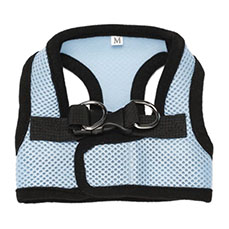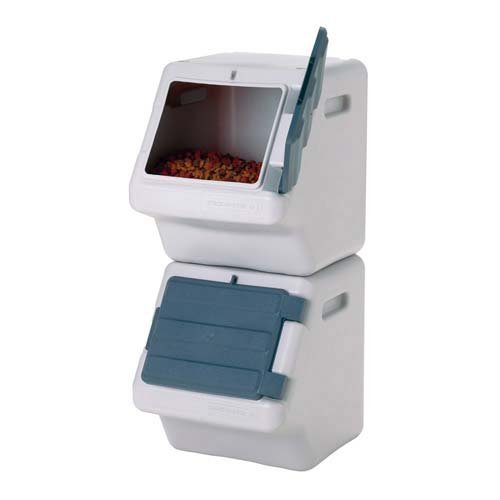
It’s a phenomenon that we’ve almost come to accept as a law; dogs hate postal workers. Each day millions of dogs across North America scare the living daylights out of postal workers as they try to deliver our mail to our houses. Our dogs will often sense the postal worker coming from a few houses away and start increasing the rate and tone of their bark as they approach. By the time the postal worker reaches the house, some dogs bark so forcefully that owners sometimes wonder if they (both the dog and the postal worker) might have a heart attack. This begs the question why do dogs hate postal workers and what can we do to solve this common problem.
As many dog lovers probably know by now, dogs are pack animals. They lived in groups in the wild and now they live within our human family group. In the wild they lived within a hierarchical order meaning every dog knew its place within the group; some members were higher ranking and some were lower ranking. The same is true in our human family and a dog sees its human family as part of its pack. When a postal worker approaches a dog’s home it is invading the pack’s territory and the dog rightly starts barking to warn the other pack members of the intrusion. The problem is obviously aggravated if the family leaves the dog outside tied on a leash as the postal worker cannot and should not approach an angry dog barking ferociously. Even worse is the family that leaves their dog loose and unfenced. This common event often ends badly with a postal worker getting bitten and the dog owners getting fines and perhaps even sued. It is the owner’s responsibility to keep the postal worker safe from harm. The fact is, is that by understanding pack behaviour there is usually a really simple way to solve this problem.
In a home where the family dog is WELL trained, the dog knows that it is NOT the leader. If the dog does not know this, you are just asking for trouble and should seek the advice of a professional trainer to correct this. In the best trained households all members of the human family should rank higher than the dog. The leader of the pack can always accept a stranger into the pack and all of the other subordinate members naturally accept the leader’s decision. This happens all the time when someone that the dog doesn’t know comes into the house. The dog may bark a few times, but after it sees the leader accept the stranger it calms down; after all the leader has spoken. The leader can do the exact same thing with the postal worker if the postal worker is willing. Sometimes all it takes is for the dog to witness the leader greet the postal worker. So if a member of the household goes to greet the postal worker for a few consecutive mornings, and the dog sees this through the window, the dog may well calm down after that. After all if the leader talks this person, he/she is a friend not a foe. If this isn’t working that well and the postal worker agrees, the leader can invite the postal worker into the home for a few minutes and under their direct supervision and while the dog is on a leash, calm the dog down, perhaps allow the dog to smell the postal worker and even maybe let the postal worker give the dog a treat. If for whatever reason this is inappropriate, the leader can go outside with the dog and wait for the postal worker while the dog is on leash (they normally arrive around the same time). As the postal worker arrives, the dog is sure to bark and this is where the owner must calm the dog down. In a well socialized dog this should be an easy task. If your dog is not well socialized, then don’t do this, or seek training advice. Again under the direct supervision of the owner the dog can then smell the postal worker (if he/she agrees), perhaps offer the dog a treat and even pet the dog. After a few days the dog should successfully acknowledge that the postal worker is not an intruder. If the postal worker is a dog lover, they can easily become friends and the dog will wag its tail and be HAPPY to see its new friend.
It must be stated that even in the best case scenario where the dog and the postal worker become friends, the dog’s owner must still always assure that every postal worker (or any other person like a delivery or utility person) be safe from their dog. After all, postal workers get sick, go on vacation and change routes, and a new postal worker will not be accepted without the routine previously described. That said, when the old postal worker returns from vacation, he/she will likely be greeting with a wagging tail, instead of a growl.
 Dogs Crates and Relaxation
Dogs Crates and Relaxation
Dogs Crates and Relaxation
Dogs Crates and Relaxation
 Catch Him Being Good
Many people find that they d
Catch Him Being Good
Many people find that they d
 Clipping your Pet’s Nails
Clipping your Pet’s Nails
Clipping your Pet’s Nails
Clipping your Pet’s Nails
 Fabulous Fashion For Your Puppy
Pet clothing is a flourishing industry; more and more p
Fabulous Fashion For Your Puppy
Pet clothing is a flourishing industry; more and more p
 5 Stackable Pet Food Storage Ideas
If you have cats and especia
5 Stackable Pet Food Storage Ideas
If you have cats and especia
Copyright © 2005-2016 Pet Information All Rights Reserved
Contact us: www162date@outlook.com